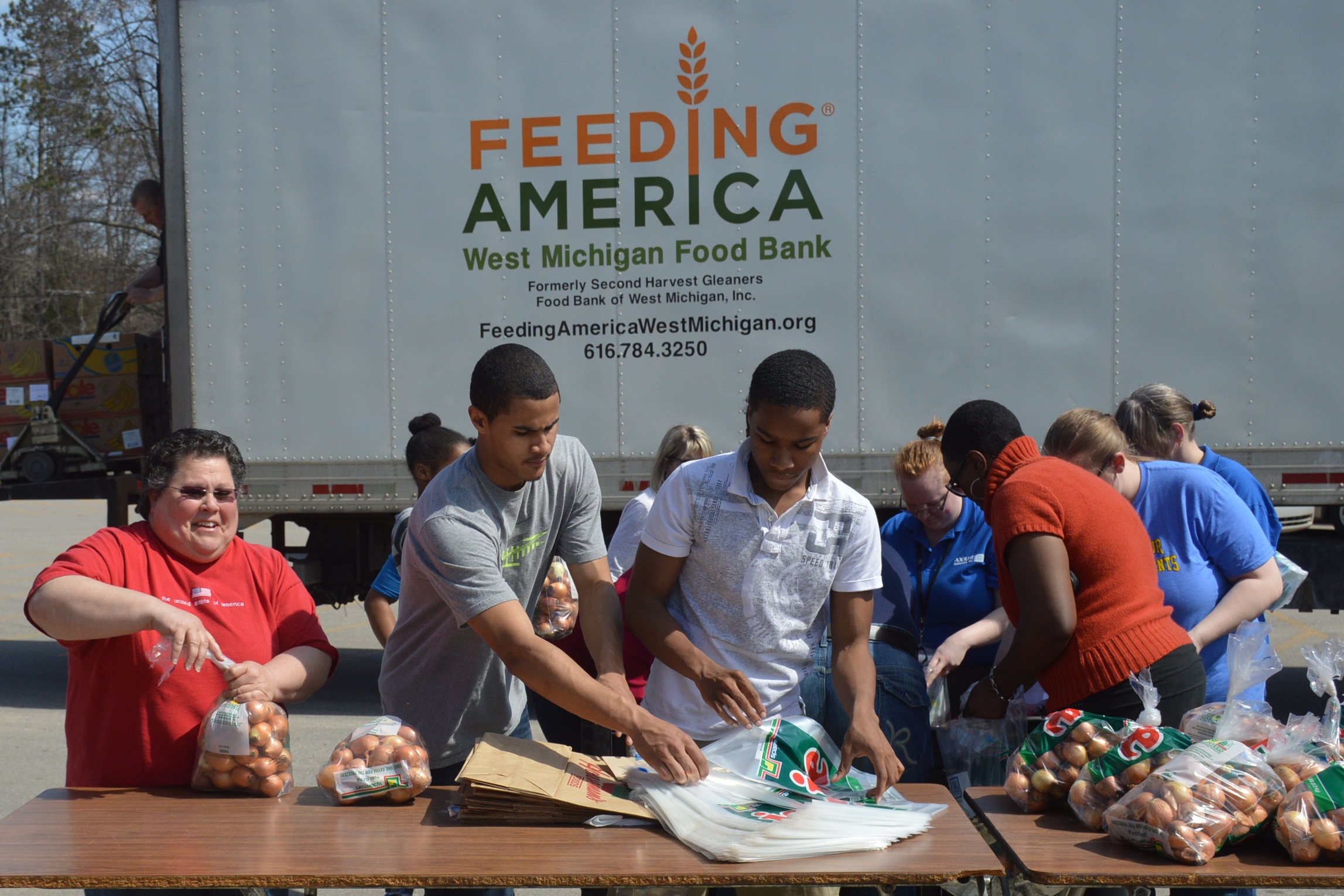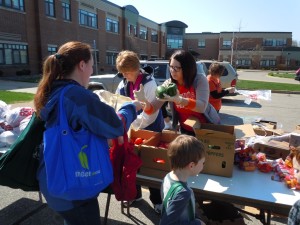
Grand Rapids, MI — May 18, 2015 — Michigan’s economy is improving, but thousands of Michiganders still struggle to meet their basic needs. The need is especially high among children. In fact, 1 in 5 kids in West Michigan and the Upper Peninsula is at risk of hunger. Feeding America West Michigan Food Bank believes it’s time to change that.
Funded by a partnership between the Michigan Health Endowment Fund and the Food Bank Council of Michigan, Feeding America West Michigan is expanding its distribution of fresh fruits, vegetables, dairy products and other food items to local schools. Beginning with Dickinson Academy in Grand Rapids in 2013, the Food Bank’s School Mobile Pantry program has expanded to 18 campuses in six counties. The grant is also funding Mobile Pantries at three senior centers.

New to the program this year is Baldwin Community Schools. Located in Lake County, home to the highest child food insecurity rate in Michigan, Baldwin’s student population has a poverty rate of close to 50 percent. Superintendent Stiles Simmons said the Mobile Pantry is a good complement to the meals offered during school:
“Knowing that our students are going to have nutritious food provided for them at home, not just at school, is comforting.”
The program is making a big impact in Grand Rapids too, where monthly Mobile Pantries are being delivered to 14 schools in the metro area.
Union High School principal Karl Nelson says that getting nutritious food to students is an essential part of education. “Look at Maslow’s hierarchy of needs,” he said. “Once we take care of the basic needs, we can ask [students] to do more and expect more.”
Martell Flowers, a single mother with two boys at Union, is currently out of work as she waits for an operation to repair a hand injury. As someone who loves to cook, she appreciates the quantity of fresh produce available at the Mobile Pantry.
“This is a wonderful truck,” Flowers said at Union’s April distribution. “I can’t really afford vegetables. You think about cabbage. It’s two bucks a head. And here they give you four.”
She pointed out the other vegetables on offer: broccoli, prepared salads, large bags of carrots and potatoes. “That’s a big variety, and I think it’s awesome.”
The Food Bank’s school pantry coordinator Elianna Bootzin says that, in spite of the meals served at school and the presence of afterschool backpack programs at some locations, the Mobile Pantry program is still needed:
“We know that these families are facing a substantial meal gap. Even with what’s being provided to the school-age children, there’s still a need for food with the rest of the family. That’s where we come in. This program provides an opportunity for the entire family to get products and ingredients that fill in those gaps,” Bootzin said.
In April, the program distributed a total of 81,796 pounds of food, its biggest month to date. Current grant funding will support the program through 2016.
About Feeding America West Michigan Food Bank. Serving local families in need since 1981, Feeding America West Michigan Food Bank reclaims safe surplus food from farmers, manufacturers, distributors and retailers. We distribute that food through a network of more than 1,100 food pantries, youth programs, and other hunger-relief agencies in 40 counties from the Indiana border through the Upper Peninsula. Each year, an estimated 492,100 people receive food from Feeding America West Michigan. For more information, visit feedwm.org.
